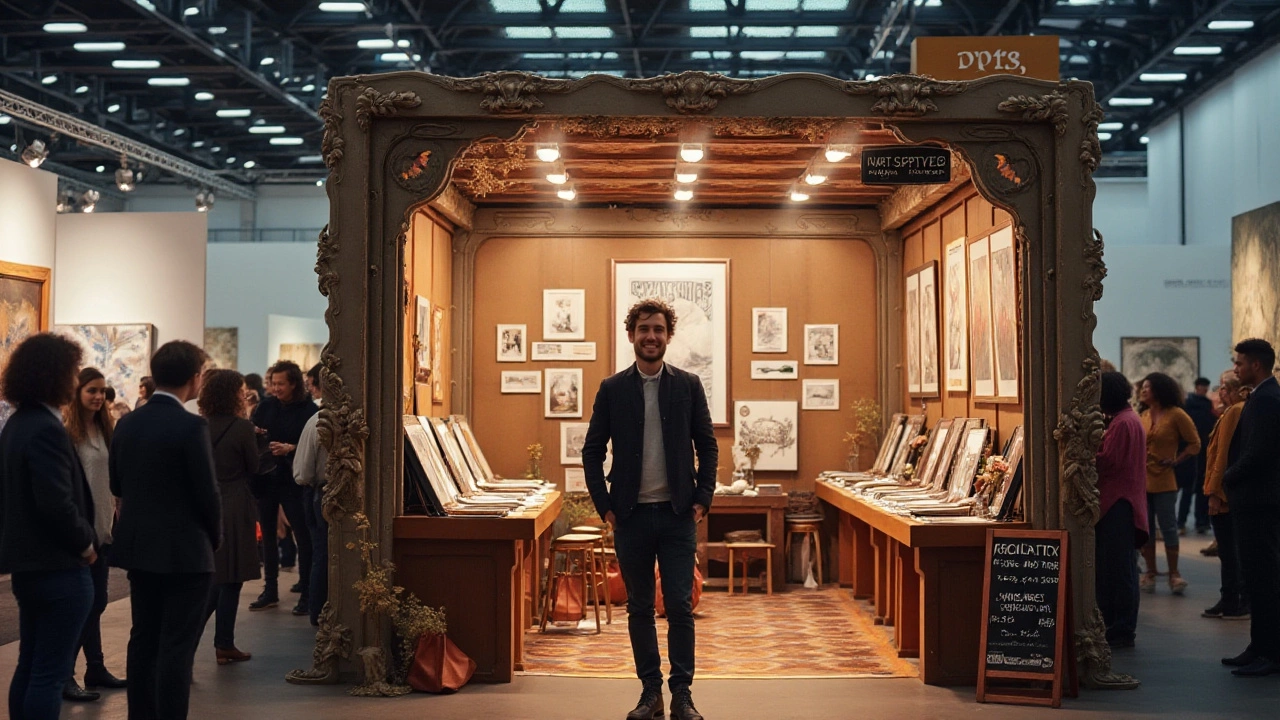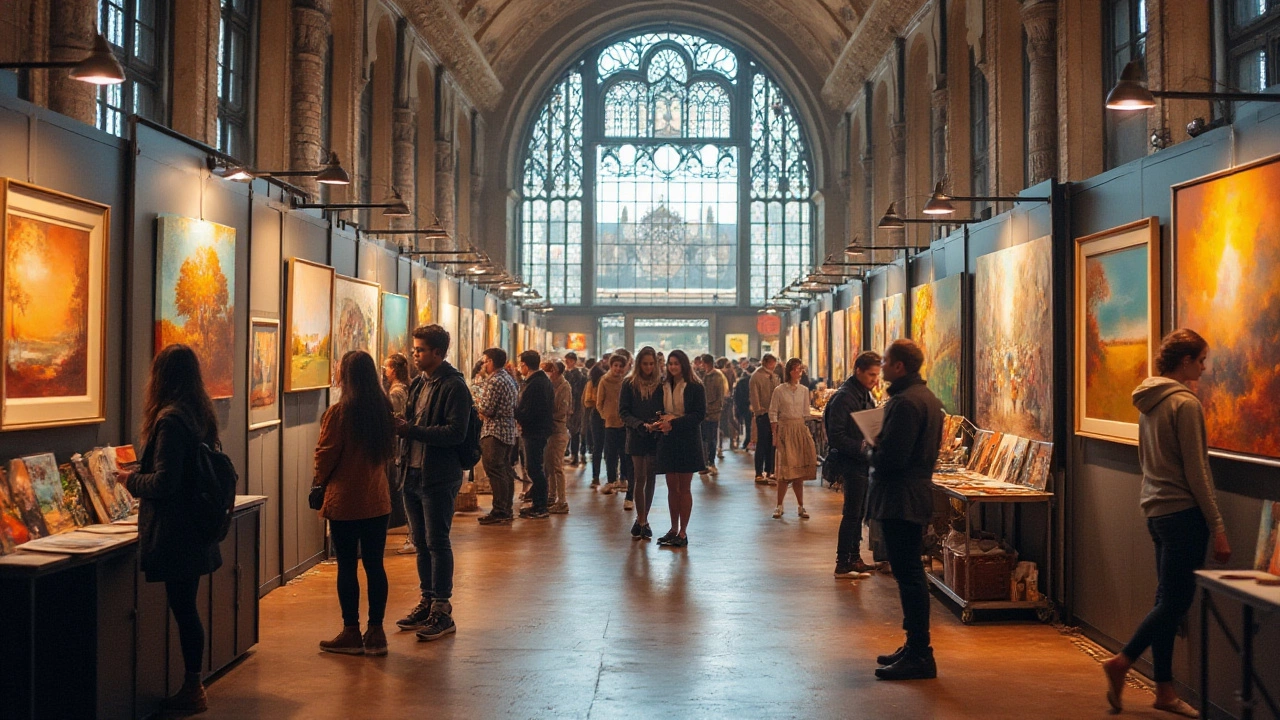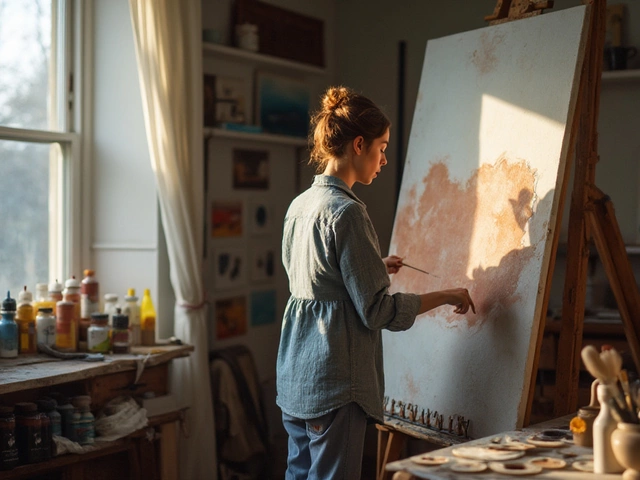Diving into the world of art exhibitions can be both thrilling and intimidating for a beginner artist. The prospect of sharing your work with the world is exciting, but the path to selling your art is filled with unknowns and potential pitfalls. Understanding how to effectively showcase and sell your creations is a vital skill that can make a significant difference in your artistic journey.
For those just starting, it's crucial to learn the basics of art presentation. How you prepare and display your art can greatly influence its appeal to potential buyers. Beyond just aesthetics, setting a fair price for your work requires balancing market research and personal valuation.
Additionally, in today's digital age, social media plays an essential role in reaching a broader audience. Knowing how to leverage these platforms alongside traditional networking can open up new opportunities. And let us not underestimate the power of storytelling – connecting your audience to the narrative behind your art can be a compelling tool in making sales.
- Preparing Your Art and Presentation
- Pricing your Art Right
- Leveraging Social Media and Networking
- Storytelling and Building Relationships
Preparing Your Art and Presentation
Setting your art up for success starts long before the exhibition doors open. The preparation phase is pivotal in creating a lasting impact. As a beginner artist eager to dive into the experience of art exhibitions, you want to ensure that your artwork is not only visually appealing but also professionally presented. This involves a few critical steps, including the proper framing, choosing the right materials, and understanding the space where your heart will be displayed.
Firstly, consider the framing of your artwork. The frame is not just about holding your work in place; it serves as a complementary element that can enhance the viewer’s perception. Opt for frames that align with the theme or tone of your piece. If minimalism is the essence of your work, simple yet elegant frames work best. For more vibrant or eclectic pieces, bold frames might be more fitting. Consider consulting a professional framer who can offer advice tailored to each piece. Professional framing might seem costly, but it is a worthwhile investment in ensuring your art makes the right impression.
Another fundamental step is using quality materials. Whether it’s the canvas, the paint, or other media, quality materials contribute significantly to the overall look and longevity of your artwork. Investing in archival-quality materials helps prevent discoloration and deterioration. Showcasing art at exhibitions often means your work will be under intense lighting for extended periods – ensuring the materials can withstand such exposure is crucial. Remember, quality is often perceived in ways the untrained eye might not articulate but genuinely feels.
Understanding the space where your art will be exhibited also plays a vital role in your preparation. Visit the exhibition venue beforehand if possible. Familiarize yourself with the layout and lighting. Beginner artists often overlook the art placement, which can either overshadow or enhance the beauty of a piece. Pay attention to the surrounding environment - colors, textures, and lighting - and prepare your art to stand out yet harmonize within this setting.
Consider your art's presentation a theatrical experience, where every detail counts. Creating a mock setup at home can give you a sense of what adjustments you might need. Playing with the alignment, height, and sequence of pieces ensures the most visually engaging presentation. It can be helpful to ask for feedback from friends, fellow artists, or even use online community forums to gain perspective on your arrangement. Remember, as artist Chuck Close famously stated,
“Inspiration is for amateurs – the rest of us just show up and get to work.”The preparation you invest is what elevates your amateur explorations into professional representations.
Lastly, don't forget the small yet significant details like business cards and artist statements. These act as bridges between you and potential buyers or art enthusiasts interested in understanding more about your pieces. Preparing an artist statement reflecting on each piece or series not only reveals your creative process but also adds an element of relatability and accessibility to your work. Creating an engaging narrative about each piece can captivate and retain attention.
In essence, preparing your art and presentation holistically involves a blend of creativity, strategy, and forethought. By focusing on these methods, you position your artworks to make memorable impressions at art exhibitions, setting the foundation for building your reputation and sales as a beginner artist.
Pricing Your Art Right
Setting the right price for your art is both an art and a science that every beginner artist must master. It's not just about putting a number that feels right; it's about understanding the value of your craft in the market and ensuring it aligns with your artistic goals and financial needs. The first step is researching similar art exhibitions and identifying what other artists, especially those who are new, are charging for their creations. While comparing, make sure to consider factors like size, medium, and the reputation of the artist, as these can drastically influence the price points.
One effective method to determine a baseline price is calculating the cost of materials and hours spent creating the piece. Add these together for a minimum price you cannot go below. For instance, if an average piece takes 20 hours to complete and you value your labor at $15 per hour, that's $300 for labor alone. Including the material cost, say $50, your minimum price should ideally be $350. However, remember to consider your target audience and venue when pricing; a piece might command a different price at a community fair than in a prestigious gallery.
Famed artist, Robert Rauschenberg, once said, "An artist is someone who can hold two opposing viewpoints and still remain fully functional." This applies to pricing as well: balancing between undervaluing your work and an overestimated figure is key. Artists must recognize that selling art at a lower price initially can help build a customer base and presence in the market. It doesn't devalue your work but can act as an introductory phase leading to justified, incremental price increases as demand and reputation grow.
Providing potential art sales clients with different sizes or versions of your work can offer an array of price points; this accessibility encourages more sales across varied market segments. For example, offering prints of your original paintings at a lower cost allows potential buyers who might not afford the original a chance to own a piece of your artistic expression. Consider creating an inventory, categorized by price range, to streamline the purchasing process for collectors and art lovers alike.
It’s worth mentioning that transparency with your pricing boosts buyer confidence. Clearly displaying prices ensures transparency and can prevent awkward conversations and misunderstandings. Additionally, being open to price negotiation can sometimes lead to a successful sale, provided you stay firm within your calculated limits. "Price is what you pay. Value is what you get," Warren Buffett wisely noted. This saying holds especially true for artists, as it reminds us that the perceived value of your work is not solely about money but the unique atmosphere and dialogue your piece initiates within a space.

Leveraging Social Media and Networking
Connecting with potential buyers and artists through social media and networking is a game changer in today's art scene. For beginner artists, harnessing the power of these platforms enables you to reach a global audience almost instantly. The first step is to identify which platforms are most popular among art enthusiasts. Instagram, for instance, is a visual-first platform that perfectly aligns with art showcasing. With features like Stories and IGTV, artists can share not only their work but also their creative process. Crafting a strong social media presence isn't merely about posting images of your art, though. Engaging your audience with informative captions, regular updates, and interactive stories can foster a deeper connection with your followers, turning them from casual viewers into potential buyers.
Networking goes hand in hand with leveraging social media. Building relationships with other artists, collectors, and galleries opens doors to opportunities such as collaborations, exhibitions, and even art sales. Participating in online art communities, such as Facebook groups or dedicated art platforms like DeviantArt, can be a catalyst for your growth as an artist. These communities provide a supportive environment where you can exchange ideas, gain feedback, and learn from others. In-person networking remains invaluable as well; attending art events, workshops, and gallery openings allows face-to-face interactions, creating memorable connections. Cultivating these relationships can lead to invaluable advice, mentorship, and insider knowledge on navigating the art market.
Creating a structured plan for your social media posts can significantly enhance your visibility. Consistency is key, and maintaining a regular posting schedule keeps your audience engaged and anticipates your next piece or exhibition update. Collaborations with influencers or other artists can also expand your reach, introducing your art to their followers. Incorporating different content types like video tours of your studio or live painting sessions can intrigue viewers and deepen their appreciation of your work. Remember, storytelling is a potent marketing tool. Sharing the inspiration and emotion behind your pieces through videos or blog-style captions can resonate with viewers on a personal level.
"Art is not what you see, but what you make others see." – Edgar Degas
Understanding analytics is crucial in forming your social media strategy. Platforms like Instagram and Facebook offer insights that showcase which types of posts garner the most engagement. This data allows you to refine your approach, focusing on content that resonates with your audience. Reflecting on these metrics can guide your future artistic and promotional endeavors. As a beginner, you may also consider investing in social media ads to boost your profiles' reach. Facebook's Ad Manager, for instance, offers targeted advertising options that ensure your art is seen by people who are most likely interested in art exhibitions and sales.
Finally, translating online connections into real-world interactions should not be underestimated. Consider organizing local meetups, exhibitions, or workshops, inviting your online community to participate. Establishing this bridge not only reinforces relationships but also solidifies your presence within the art community. The world of art is vast and interconnected, and by embracing both social media and personal networking, you create a powerful synergy that launches you towards success in the ever-evolving art market. A thoughtfully strategized presence on social media combined with sincere and meaningful networking can set the foundation for a flourishing career as a beginner artist.
Storytelling and Building Relationships
In the mesmerizing dance of art sales, storytelling takes center stage. For a novice hoping to succeed in art exhibitions, understanding the narrative woven into each piece is invaluable. As people wander through an exhibition, they aren't only drawn to the visual appeal; they're pulled by the stories that breathe life into each artwork. This is where your passion as an artist can shine brightest. Sharing the inspirations, struggles, and triumphs behind your creations not only captivates but also creates a personal connection with potential buyers. The beauty of storytelling lies in its ability to transform a passive observer into an engaged participant. It's no wonder that many successful artists invest time in refining the stories behind their artworks, presenting them as narratives that invite viewers to explore deeper meanings and connections.
Building genuine relationships with your audience requires more than just a captivating story. It's about engaging sincerely with those who show interest in your work. When people take the time to view your art, they are engaging in a dialogue—an unspoken exchange of ideas and feelings. Responding authentically to questions, appreciating their perspectives, and sharing your journey can foster a meaningful rapport. Attending art events and networking sessions creates opportunities for more in-depth conversations, offering a chance to understand what collectors are truly seeking. Never underestimate the power of a handwritten note or a personal message to those who show interest. These touches make your art feel more personal and valued.
"Selling art is about building trust and relationships. When you share the personal story behind your work, people tend to invest not only their money but also their trust." — Maria Brophy, art business consultant.
Let's not forget the value of feedback in this equation. As you build relationships, seek opinions on what resonates with people about your work. This not only offers insights into how your art is perceived but also provides a framework for growth, enabling you to refine your storytelling and adapt your work to broader tastes. Don't shy away from seeking constructive criticism. Often, these critiques lead to new perspectives and innovative directions, eventually fortifying your position within the artistic community.
In today's digital age, social media platforms provide artists with unique opportunities to expand their reach and solidify relationships. Through live storytelling sessions and interactive posts, artists can share their creative process from start to finish. Hosting virtual studio tours or live Q&A sessions allows for direct interaction and deeper engagement with your audience. Consistent updates keep your followers engaged and invested in your journey. Additionally, developing a newsletter can serve as a regular touchpoint to update collectors and fans about your latest works, upcoming exhibitions, and personal stories from your artistic journey.



